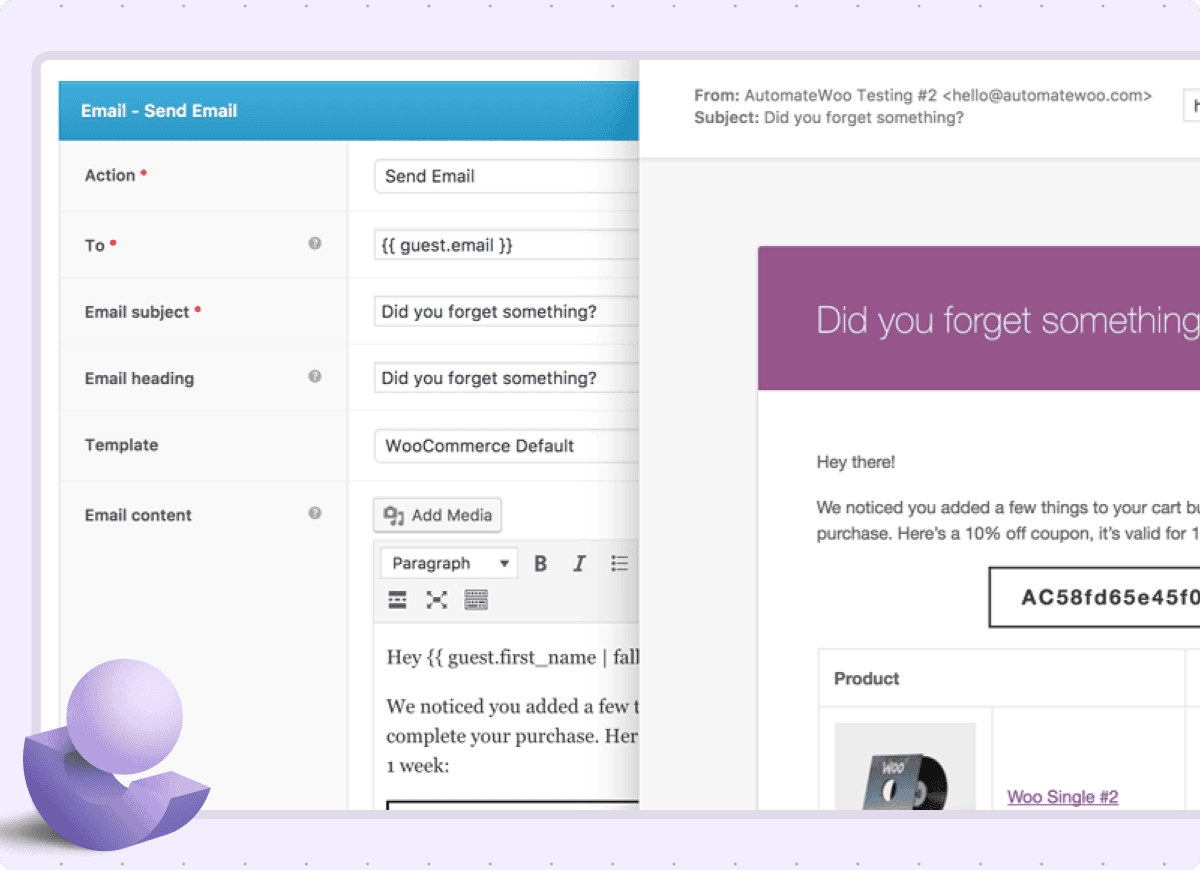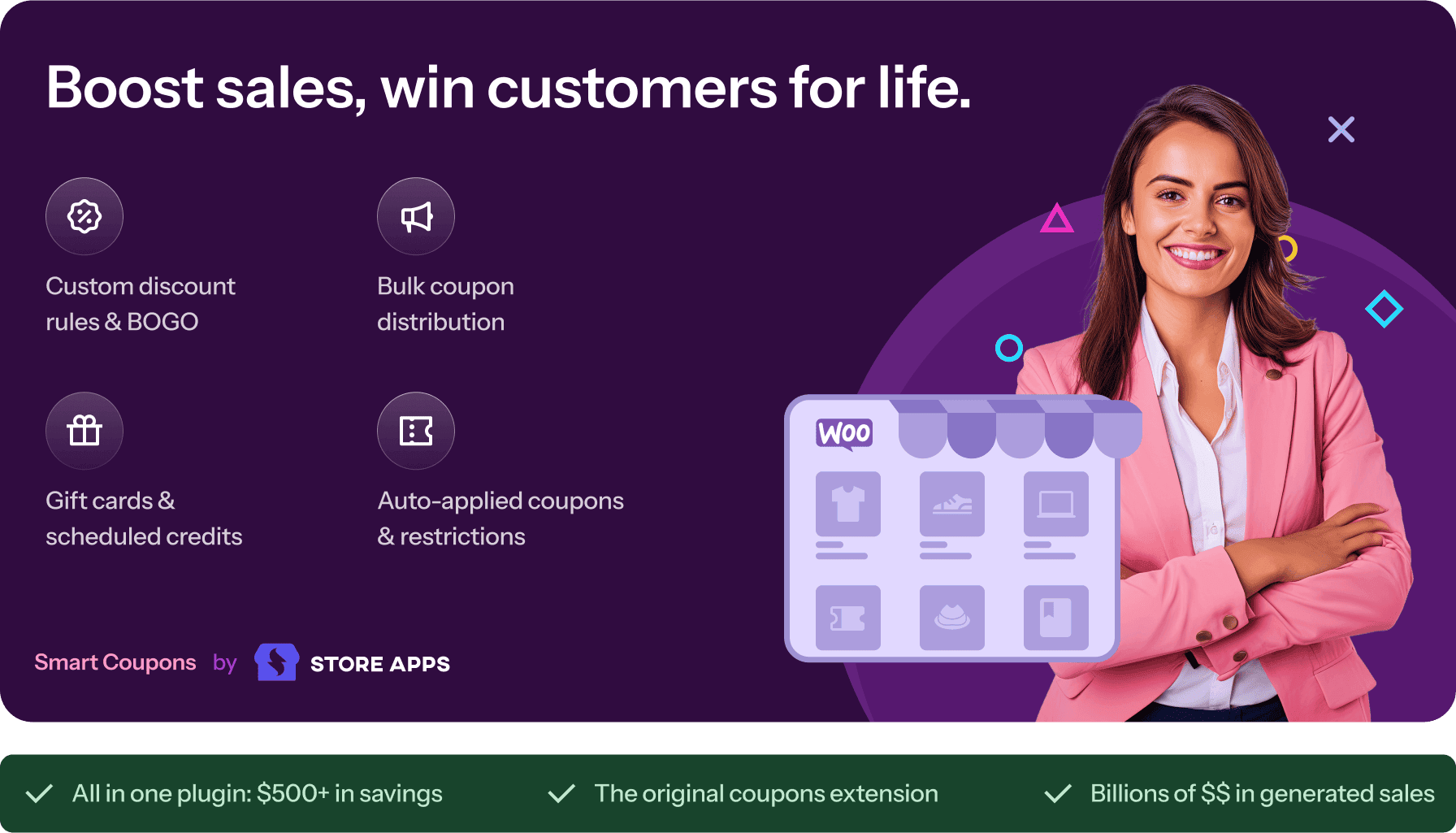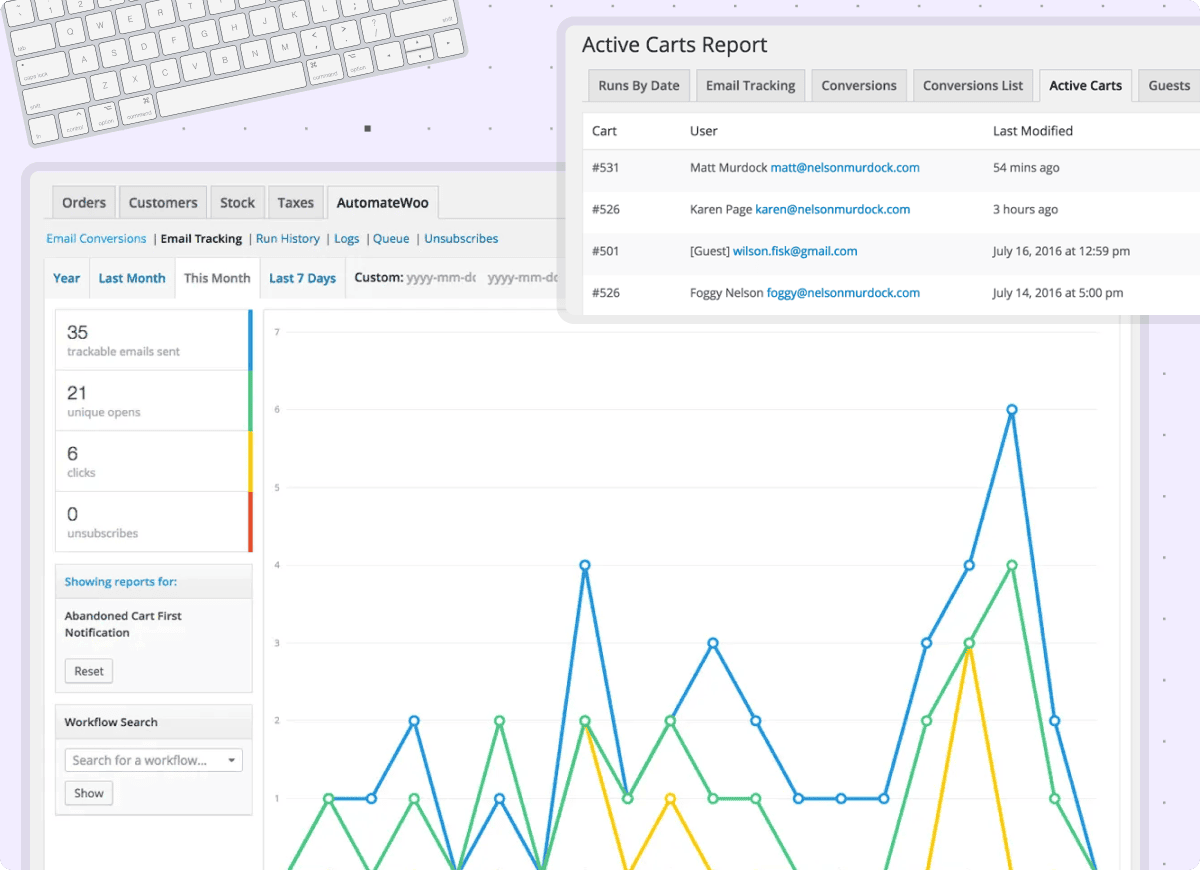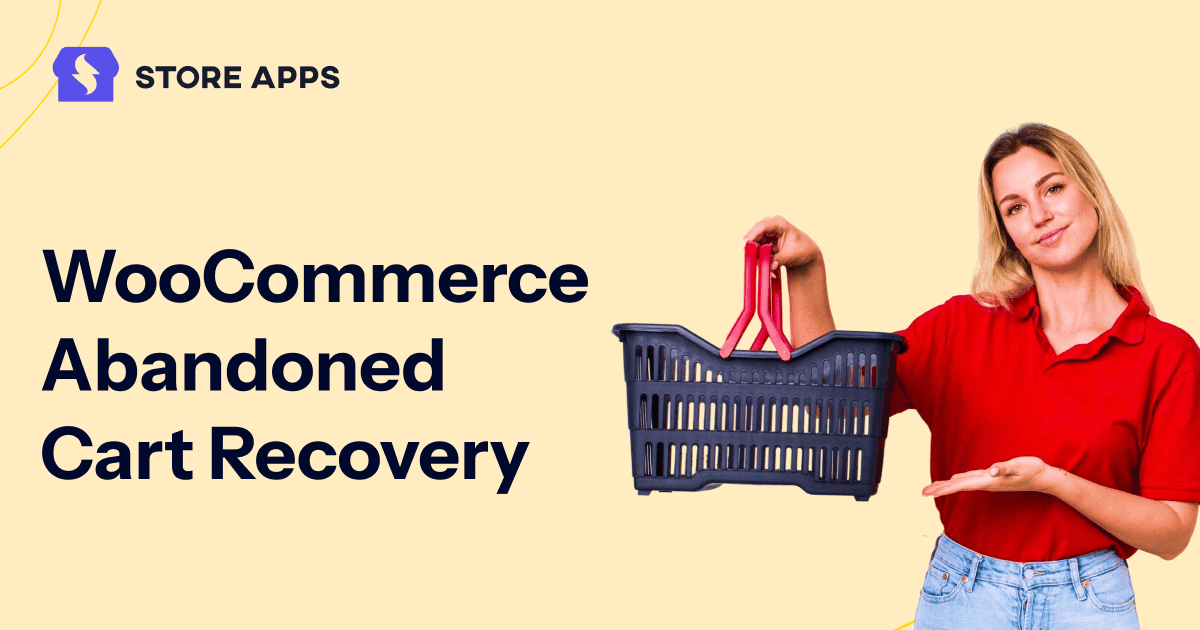You’ve got your store running, traffic coming in, and everything seems fine until you check the dashboard.
A handful of carts filled, then abandoned. Again.
Frustrating? Absolutely.
But here’s the good news, those abandoned carts aren’t dead ends. They’re clues. Clues you can use to win shoppers back.
That’s what WooCommerce abandoned cart recovery is really about, turning “almost” into “yes.”
Cart recovery isn’t about desperate discounts or pushy emails. It’s about building smart, flexible systems that fit your store and actually bring shoppers back. And WooCommerce gives you all the tools you need to do it right.
So, let’s walk through 7 proven strategies (plus ready-to-use email templates) that will help you turn abandoned carts into recovered revenue.
Strategy #1: Prevent abandonment before it happens
The smartest WooCommerce abandoned cart recovery strategy? Don’t let the cart get abandoned in the first place.
Think about your shoppers. They don’t drop off because your products aren’t good. They leave because:
- Distraction: a notification steals their attention.
- Friction: too many fields, too many clicks.
- Hesitation: they need that extra nudge to commit.

Icegram Engage fixes distraction. Let’s say a visitor moves to close the tab, you can catch them with an exit-intent popup offering free shipping or reminding them their cart will be saved. That’s an email captured and a cart saved.

Cashier eliminates friction. A standard WooCommerce checkout can take 3–4 steps. It collapses it into a one-page checkout or lets buyers skip straight to payment with direct checkout. That means faster checkout, fewer drop-offs, and a noticeable lift in conversions.
And hesitation? That’s a big one. Let’s talk about that in the next strategy.
Strategy #2: Timely reminder emails
Hesitation at checkout doesn’t always mean rejection, it usually means the shopper needs a little more time or reassurance. This is where reminder emails shine.
A cart left behind today can easily turn into tomorrow’s order if you follow up at the right moment.
Icegram Express makes that follow-up simple. You can set up automated cart recovery emails to go out an hour later, a day later, or even three days later, whatever works best for your store.
Personalize them with the customer’s name, product details, or even an incentive like free shipping. It feels like a helpful reminder, not a pushy sales pitch.

If you want more control, AutomateWoo gives you advanced options. Conditional rules and smart sequences let you tailor messages, so a first-time visitor sees something different from a loyal customer.
That level of personalization means higher opens, clicks, and conversions.
The bottom line, hesitation fades when you step in with a timely, relevant reminder.
But remember, email won’t catch everyone. Some customers live in their inbox, others on WhatsApp or SMS. That’s where the next strategy comes in.
Strategy #3: Multi-channel nudges
Email is powerful, but it’s not foolproof. Some shoppers won’t open it for hours. Some won’t open it at all. And when hesitation is already at play, waiting around is risky.
That’s why you need backup channels. A quick SMS, a WhatsApp ping, or a browser push notification can reach customers faster, right where they’re already active.
- WP SMS sends a short, direct reminder to their phone. Simple, immediate, hard to ignore.
- Click to Chat nudges them on WhatsApp, where they’re already messaging friends. One tap, and they’re back at checkout.
- OneSignal sends a push notification straight to their browser. Even if they never check their inbox, you still show up.
The key isn’t replacing email, it’s reinforcing it. A polite tap across multiple touchpoints increases recovery without overwhelming shoppers.
Sample WhatsApp / SMS script
Hi [Name], you left [Product Name] in your cart at [Store Name]. It’s still waiting for you: [Cart Link]
Complete your order before it’s gone!
Strategy #4: Retargeting ads that convert
Not every shopper will come back through email or SMS. Some need a reminder while they’re scrolling Instagram, watching YouTube, or searching on Google.
That’s where retargeting ads do the heavy lifting.
Here’s how it works: someone visits your store, adds a product to the cart, and leaves. Later, they see that exact product in their Facebook or Instagram feed, almost like it followed them.
That relevance keeps your brand fresh in their mind and pulls them back to buy.
PixelYourSite makes this simple. It syncs your WooCommerce store with ad platforms so you can run dynamic product ads, showing people the exact items they left behind. That precision is what gets clicks and conversions.
Retargeting isn’t about chasing customers around the internet. It’s about reminding them of what they already wanted. And when you pair that with a smart incentive, you turn hesitation into a purchase.
Speaking of incentives, let’s talk about how to sweeten the deal without killing your margins.
Strategy #5: Incentivize smartly (without margin burn)
Retargeting ads remind shoppers, but sometimes a little nudge is all it takes to turn hesitation into a sale. That’s where smart incentives come in.
The key is to reward, not train. Flat discounts may recover a cart, but they teach shoppers to wait for the next coupon.
Instead, offer store credits, free shipping, or a bonus product. These feel like perks, not bribes and often bring customers back for repeat purchases.

Smart Coupons make it easy. Create store credits, BOGO deals, gift vouchers, or conditional discounts in just a few clicks. You get flexibility to push hesitant shoppers while keeping your margins intact.
But why stop at coupons? Try Smart Offers to create personalized upsells, cross-sells, and order bumps right in the checkout flow.
A small add-on (“Add this product for just $199 more”) or a relevant bundle deal can turn hesitation into excitement, recovering the cart while also boosting average order value.
The best part? You’re not just recovering abandoned carts, you’re creating loyal customers.
And remember: not every shopper responds the same way. Segment your incentives based on behavior or purchase history for the best results.
Strategy #6: Personalize with advanced automation
Not all shoppers are the same, so why send the same recovery email to everyone?
A first-time visitor, a loyal customer, and a high-value buyer all respond to different nudges. Personalization turns “generic reminders” into messages that actually resonate.

AutomateWoo makes this simple. You can build advanced workflows, send VIP customers a thank-you coupon, reassure a first-timer without discounting, or time messages differently depending on behavior.
Use dynamic product details, conditions, and timing to make every message feel thoughtful.

Want to take it even further? Putler’s RFM segmentation helps you identify your most valuable, frequent, or at-risk customers.
Combine these insights with your recovery campaigns, and you can target the right person with the right message at the right time.
The result? Emails and nudges that feel less like marketing and more like good customer service, boosting recovery rates and loyalty at the same time.
Strategy #7: Analyze, test, optimize
WooCommerce abandoned cart recovery isn’t a “set it and forget it” process. What works this month might flop next. The key is to track results, experiment, and keep refining.
Putler helps here with insights and comparisons. From the dashboard, you can:
- Compare customer segments.
- Track sales trends over time and relate them to your recovery efforts.
- See product-wise sales & revenue (what’s selling, what’s not).
- Compare segments (e.g., which customers buy which products).
- Use RFM segmentation to identify who needs a perk and who just needs a reminder.
Combine that with insights from Google Analytics or Hotjar heatmaps, and you’ll pinpoint where customers drop off and how to fix it.
You can also GA4 to set up a checkout funnel to see where users disappear.
The more you test, the more efficient your recovery system becomes. Small tweaks like changing email timing, adjusting incentives, or personalizing messages, can lead to big wins.
With these strategies in place, you’re ready to implement a 3-step email sequence that puts all this into action and starts recovering abandoned carts effectively.
WooCommerce abandoned cart recovery email templates
Here’s a ready-to-use 3-step email sequence that complements the strategies above, helping you nudge shoppers back and recover abandoned carts.
Email #1: Gentle reminder (1 hour after abandonment)
Email #2: Incentive reminder (24 hours after abandonment)
Email #3: Last-chance reminder (72 hours after abandonment)
Is cart recovery really worth it?
You might be thinking, “All this effort, emails, SMS, push notifications, does it actually pay off?” The short answer: yes.
With the average cart abandonment rate hovering around 70%, most stores leave a huge chunk of revenue on the table.
Even recovering a fraction of those carts can add thousands in extra sales every month.
Investing in tools like Icegram, AutomateWoo, or Smart Coupons isn’t just about recouping lost sales. It’s about building a system that consistently turns hesitation into revenue.
When done right, WooCommerce abandoned cart recovery isn’t a cost, it’s one of the highest-ROI tactics in your WooCommerce toolkit.
FAQs
- Can I recover carts from guest users in WooCommerce?
Yes. Even if customers don’t create an account, you can still recover their carts if they enter an email address during checkout.
Guest carts can also be tracked using cookies or device IDs, allowing you to follow up with reminders once their contact details are captured.
- How can I recover abandoned carts without discounts?
Discounts aren’t the only way to bring shoppers back. Alternatives include:
- Offering free shipping instead of price cuts.
- Using exit-intent popups to remind customers their cart is saved.
- Sending timely reminder emails with product details.
- Adding social proof like reviews or ratings in your follow-ups.
- Providing store credits or loyalty points that encourage future purchases.
- How do I track WooCommerce abandoned cart recovery performance effectively?
You can measure cart recovery success by:- Tracking the number of recovered carts vs. total abandoned carts.
- Monitoring conversion rates from recovery emails or reminders.
- Analyzing checkout funnel reports in Google Analytics to identify where shoppers drop off.
- Reviewing recovered revenue as a percentage of lost sales.
The key is to look at both the volume of recovered orders and the overall revenue impact.
- What incentives work best for abandoned cart recovery without hurting profit margins?
The most effective, profit-friendly incentives are:
- Free shipping, since it adds value without reducing product prices.
- Store credits or loyalty rewards, which bring customers back for repeat purchases.
- Small add-ons or freebies (like samples or bonus content) instead of discounts.
- BOGO deals that move inventory while encouraging higher order values.
- Does WooCommerce have built-in abandoned cart recovery features or do I need plugins?
By default, WooCommerce does not include WooCommerce abandoned cart recovery features.
You’ll need to set up additional tools or plugins to track abandoned carts, send reminders, and analyze recovery performance.
